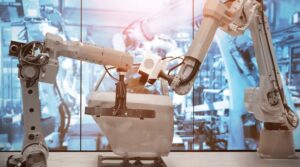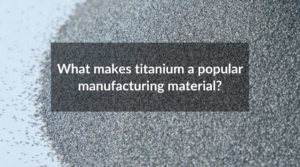
3D printing or Additive Manufacturing technology has made advancements and spread to various sectors in the past few years. Although, the real potential of the Additive Manufacturing technology is yet to be realised. Hopefully by the end of this decade we’ll be able to see some major advancements and innovations made in 3D printing technology.
Major changes in 3D printing or Additive Manufacturing Technology
Additive Manufacturing, with its fast design and production will pave its way into the existing supply chain in manufacturing workflows, and change the method of development of products. With time it will increase its computing power, machine productivity, product quality and recyclability while lowering the cost per energy will provoke more industrial sectors to integrate Additive Manufacturing into their workflows.
Materials that are now used for 3D Printing or Additive Manufacturing are very limited. There will be a huge book of new materials that are compatible with AM, then the areas where AM is applicable will increase rapidly, thus revolutionising the existing conventional methods of production. By the end of 2030, 3D printing or AM will become a mainstream manufacturing technique.
Additive Manufacturing will have a huge impact on the following sectors:
- Aeronautics
- Health and Welfare
- Automotive
- Defence and Military Services

Future of 3D Printing in Space
Additive Manufacturing has the advantage over other methods of construction in remote areas or areas that aren’t easily accessible for construction; it can be used at places which aren’t easily accessible by people for instance a fully automated 3D printer can be used for construction on the moon. If the raw material needed can also be acquired from the moon, then it’ll be comparatively cheaper as there wouldn’t be a need to ship the whole base to the operation site. Construction of the floor, walls and ceilings of the building will be made of lunar dust.
It will be used in spacecrafts and space stations as a 3D printer that is able to function in a microgravity environment will be very helpful in unexpected circumstances in remote places like outer space. Carrying a fixed set of spare parts could prove useless upon arrival thus using a 3D printer would be more appropriate.
Impending impact of 3D Printing in Health and Welfare sector
Bioprinting is also an additive manufacturing process like 3D printing but it prints with cells and biomaterials creating living like structures that are able to multiply at a cellular level. With time it’ll be able to successfully print skin, cartilage, tissues etc.
3D printing will make an impact on the health industry. Fully functional bones will be printed using additive manufacturing technology using material which will be equivalent to human bone tissue; using the patient’s own DNA; having bone marrow and will include all other necessary biomechanical systems that the body will need to function that bone properly.
3D printing will make prosthetics cheaper and widely available which will be of great help for the amputees all over the world. It can also be used to create medical tools and equipment needed by the doctors during surgeries.
Even pills are made using 3D printing, which will make the production of life saving drugs cheaper, easier and available to a larger population.
In Nepal, the United Nations is using 3D printing as a part of the plan to deal with earthquakes. 3D printing can be helpful in getting the essential goods and services to the disaster affected areas and refugee camps; allowing workers and other forces to access the required tools and parts that are required for the recovery.
Thus, 3D printing or Additive Manufacturing will be creating a huge impact on the health and welfare industry.
3D Printing in Automotive Industry
The first 3D electric car has already entered the market; it was made by the Italian start-up X Electrical Vehicle (XEV) with the Chinese company Polymaker. It is a low-speed electric vehicle which is produced in just three days using a 3D printer.
More micro factories will be up and running; leading to mass customization instead of general mass production. It will help in creating a decentralised and localised production of parts and solutions.
3D Printing’s role in Sustainable Development
3D printing is letting us recycle old materials and use it in a more sustainable method. Effective consumption can be ensured by reusing former waste materials in creating future products; thus, creating a green and sustainable society.
There is also an effort to make the whole 3D printing process more sustainable by using algae-based filaments to reduce the energy used for the printing process.
India and 3D Printing
In India, industries have been using metal 3D printers for large scale production of parts made of steel, Titanium and Aluminium. But the cost of these machines is comparatively high. One way of reducing the total operational costs is by made-in-India 3D printers.
With the support of the Indian government including subsidies and tax relief on some products; made-in-India 3D printers will enter the market in the coming years which will be offering top-notch features at a reasonable price. Which will lead to a massive growth in the application of metal 3D printing in the Indian manufacturing industry. 3D printing technology will become accessible to small-scale businesses as it would cut down the overhead expenditure and save production costs.
About Us
We, Objectify Technologies, as a company have grown by leaps and bounds within the last three years and have become one of India’s forerunners in the field of Additive Manufacturing/3D printing/ Rapid Prototyping in polymers as well as in metals. We offer the best 3D Printing solutions that give customers a competitive edge in their markets. In the rapidly growing 3D printing industry, we are a one-stop solution for all your needs from fully functional prototypes to production parts.


